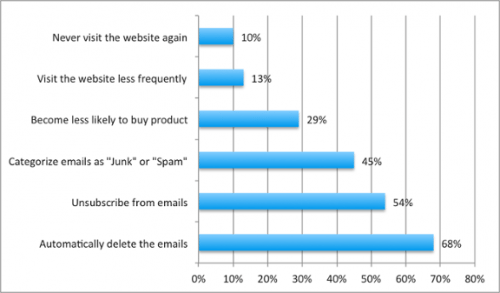Earlier this week, I received the following email from Pinterest:

You may wonder why this is at all significant. Kassie, Pinterest sends emails like this all the time…Yes, they do. But guess what? I don’t hate running- I really, really love it. “Embrace the morning run” makes it even better-I pretty much only run in the morning. Maybe Pinterest and I need to spend more quality time together, because we clearly don’t know one another well at all…
While this was ultimately a hilarious experience, I would be mortified if I was the person who sent this email. It’s a great example of when automation goes wrong.
Scenario 1: Pre-Scheduling/Automated Posts
Not all automating is bad. I use it to schedule Facebook posts, tweets, and blog posts in advance. The thing is, you can’t just put this stuff on autopilot- consider Murphy’s Law. Facebook, for example, went through a month-long phase where it wasn’t publishing any of the posts I had pre-scheduled. It made it on my radar, and for awhile I had to manually publish everything, but it would’ve made me look lame if updates weren’t publishing for a month because I scheduled them and forgot about it.
Another potential danger to look out for in pre-scheduling is the actual content. You don’t want to schedule things too far ahead, because new information is constantly coming in and you don’t want to be known for posting month-old articles. In keeping scheduled posts relatively short-term, it’s also more likely that you’ll remember what you’ve scheduled to go out and make adjustments as necessary. For instance, if an event that you’re promoting gets cancelled, but you’ve scheduled some status updates to build excitement, it’s really awkward if those end up getting published because you forgot about them.
You can also set up automated posts to respond to mentions on Twitter or Facebook (or anywhere else). As a warning, the results are often hilariously terrible. For example, this automated response from Dominos Pizza:
This person had an excellent Domino’s experience…but Dominos apparently believed it needed a different PR approach on it’s Facebook page…and apologized for the inconvenience.
Scenario 2: Automated Names
These often fail the hardest, and are the biggest giveaways that robots handle your marketing. If you have no interaction with a person besides him filling out a form on your website, you don’t necessarily need to be on a first-name basis. This chart below (from Beachhead) shows the most common reactions to errors in a personalized email.
If it’s a larger corporation, I generally assume most of the marketing emails I get have been automated, so I’m a bit more forgiving (it’s not like the CEO of Old Navy knows my first name). But, if it’s a smaller business and I’m a loyal customer, getting a personalized email for “Amanda” would be a bit offensive. On a scale of “Never visit the website again” to “Automatically delete emails,” I’m probably more of a “Continue receiving emails for mild amusement but never take this business seriously again.” Depending on the individual, you may get more of a “Meh” response to a “This is totally a personal affront” repsonse.
Fun fact: we don’t have first name fields enabled on our email newsletters, and it’s not because we don’t appreciate our individual subscribers- it’s because we read about automation fails and know how potentially damaging a glitch in the system can be).
Scenario 3: Marketing the wrong things to the wrong people.
This tends to be more of a large scale business problem that comes from sending automated sales emails. It’d be kind of embarrassing to send out an email trying to sell a specific type of lawnmower to someone who just purchased one from you earlier in the month. Being on the receiving end of that email would also be confusing: maybe the customer and salesperson had some lengthy phone calls/email exchanges about the purchase, examining options in a way that made the customer feel really, really awesome about his/her new lawnmower. I’m talking zero-buyer’s-remorse positive. This person was raving about how attentive the business was to the needs of individual customers. And then…this tragic email.”What the…it’s like they don’t even know me…”
Heavy automation takes away the humanness of marketing. The risk, especially with smaller businesses, is that your existing customers feel undervalued. The reason people enjoy small business interactions is because there’s a unique quality of service implied: a genuine friendliness, a concern for the customer’s needs (in other words, they kind of expect that warm and fuzzy feeling).
This is where something like email segmenting can come in handy, if you have the time and patience to sit down and go through it all. This can help add a personalized element to your automation, plus, your messages are going to get more bang for your buck when they get to the people who will benefit from them.


